STORIES FROM THE PLATTELAND
A spell of spots scattered around the Karoo veld
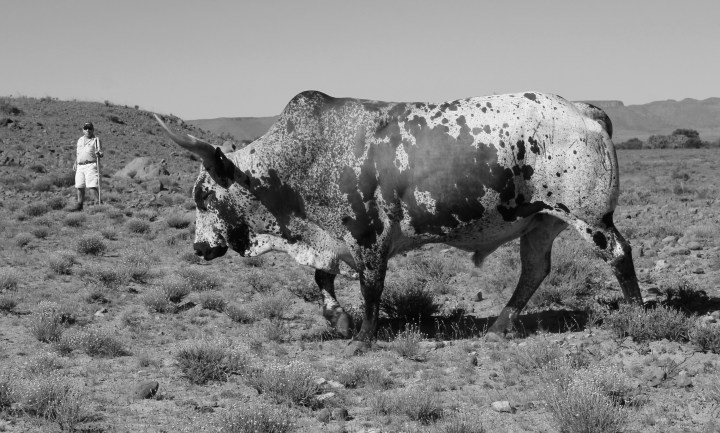
Our visit to a family farm just south of Gariep Dam happened when a truly Biblical drought had begun to bite deep. But despite it, life seemed unaccountably cheerful out here at Gelykfontein.
The sun rises on Gelykfontein Farm and, down by the stables, Copper the Fluffer is feeling frisky.
In many ways, he’s one lucky Palomino stallion. Copper’s job is to identify mares on heat, with a show of great enthusiasm. As they pass his quarters, they will indicate their readiness with a lift of the tail. If they’re not in the mood, they will try to kick him in the teeth as they sashay by.
That’s why Copper’s enclosure is well padded with old tyres. The mares on heat are destined to share their affections with other thoroughbred stallions. But lest you shed a tear for Copper’s sex life, he occasionally gets to run with the resident farm herd of free-roaming horses. And then, who knows what happens out there in the veld?
Our visit to this family farm just south of Gariep Dam takes place in 2016, when a truly Biblical drought has begun to bite deep. But despite it, life seems unaccountably cheerful out here at Gelykfontein. The racehorse brood mares with their long-legged colts and fillies in the paddocks are peacefully swishing their tails. The Nguni cows are glossy and in fine condition.
At the farmhouse, Poffie the parrot is up to his usual tricks, calling Nonna the boerboel and then telling her to voertsek before launching into his repertoire of telephone sounds.
Farmer Schalk van der Walt is the fourth generation on this land. On a morning ramble with him through the veld, we realise the Van der Walt family is as tough as the land itself.
“Even with this terrible drought, I wouldn’t want to live anywhere else,” says Van der Walt. “If I had my life again, I would do exactly this. The Karoo has been good to me.”
In his distinctive sing-song voice, he speaks of the resilience of the land, of its mineral-rich soils, the mercies of a healthy, dry climate, and the blessings of the Verreaux’s eagle that roost here.
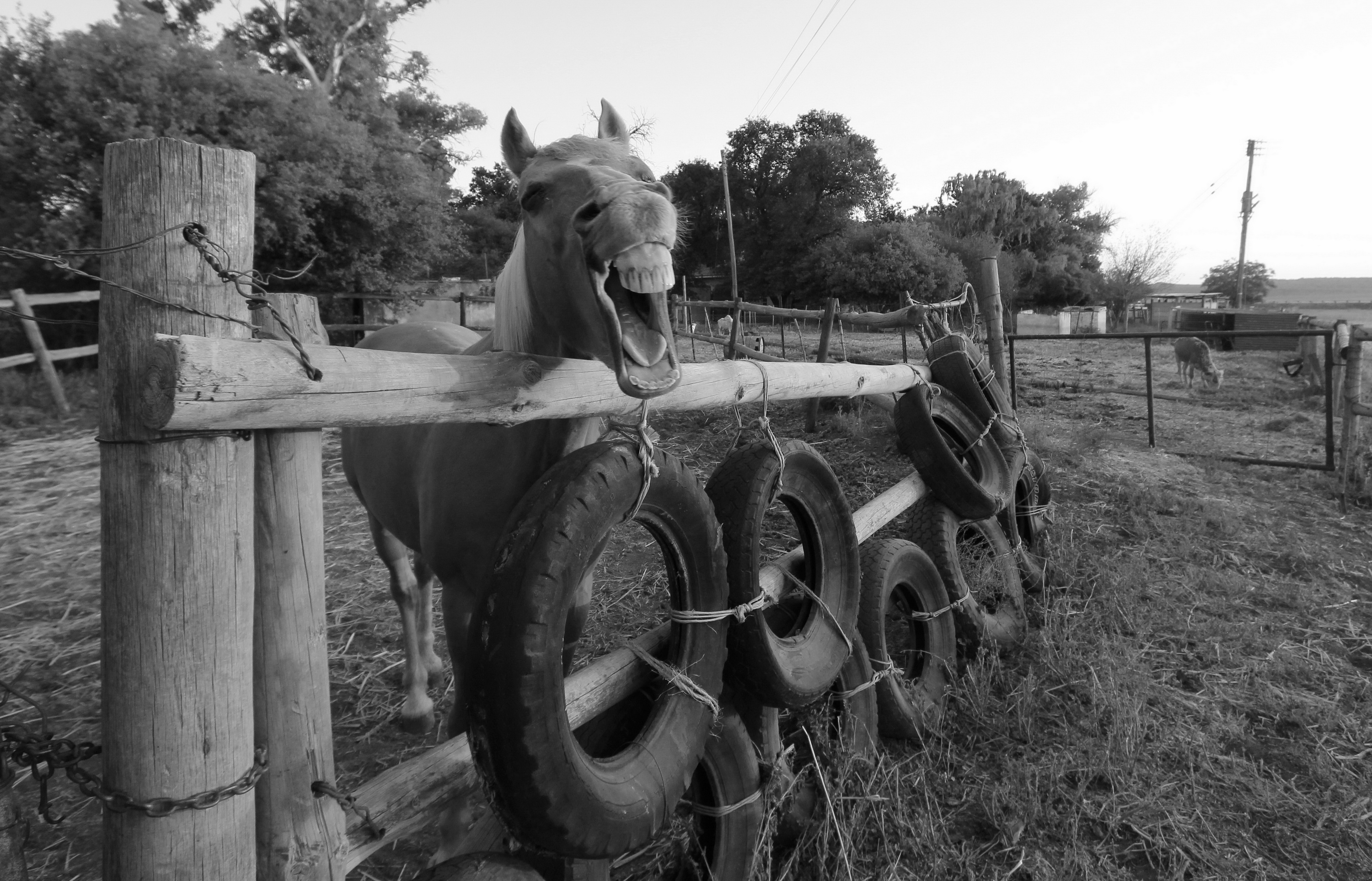
Copper the good-natured Palomino is the ‘teaser’ for the thoroughbred brood mares. Image: Chris Marais
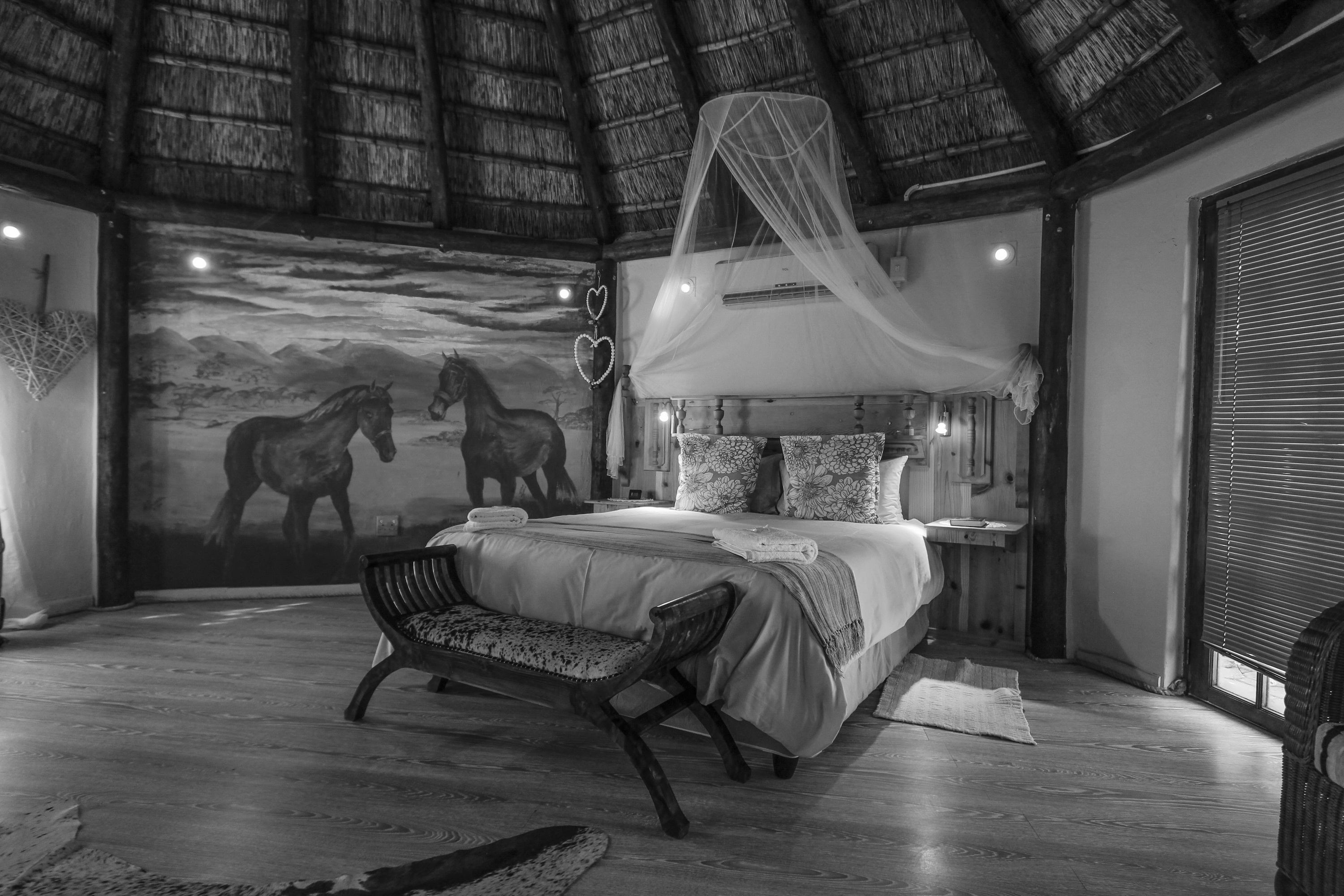
The horse theme is picked up in one of the Morning Glory guest cottages. Image: Chris Marais
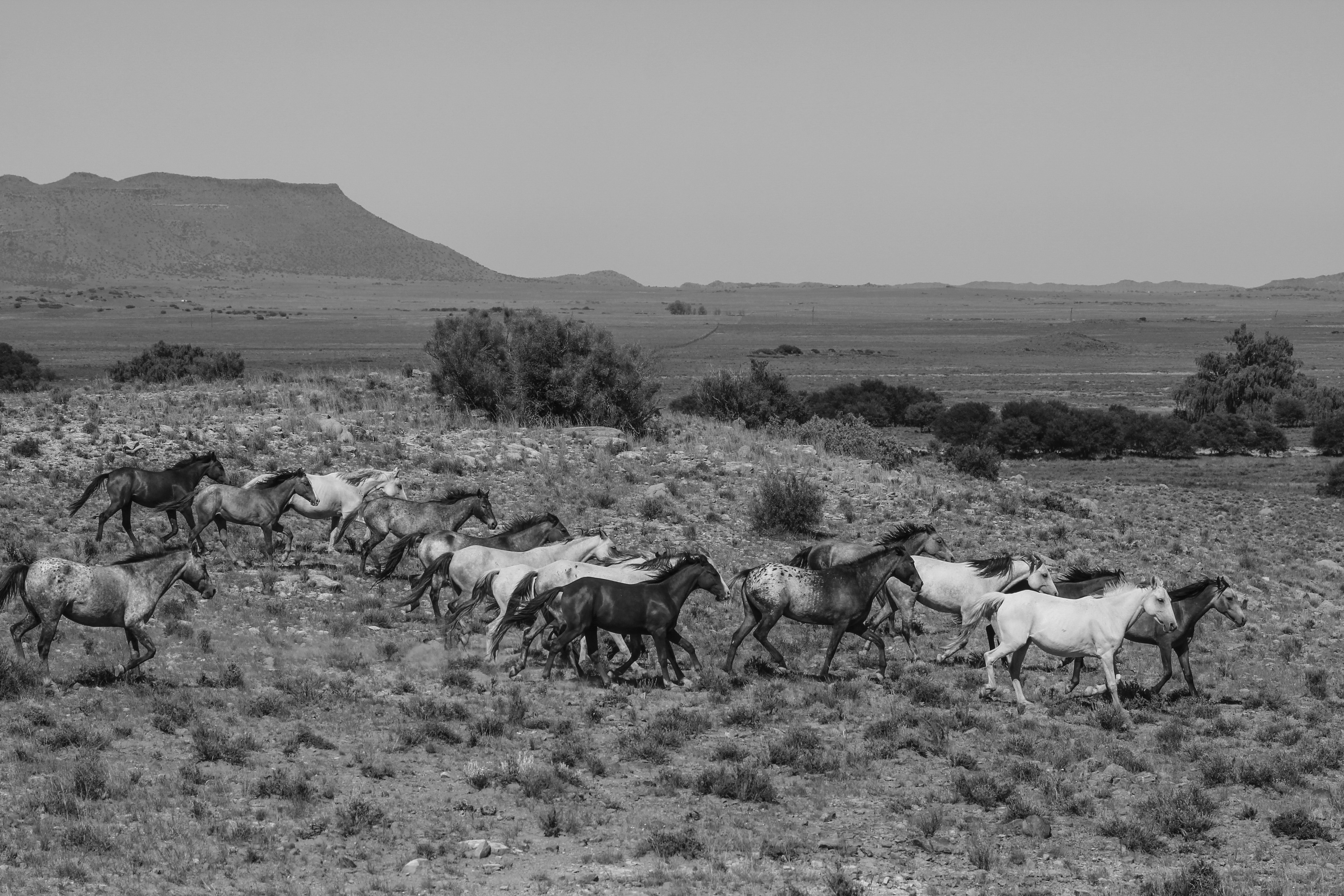
A vari-coloured troop of ‘Karoo mustangs’ canter down to the water. Image: Chris Marais
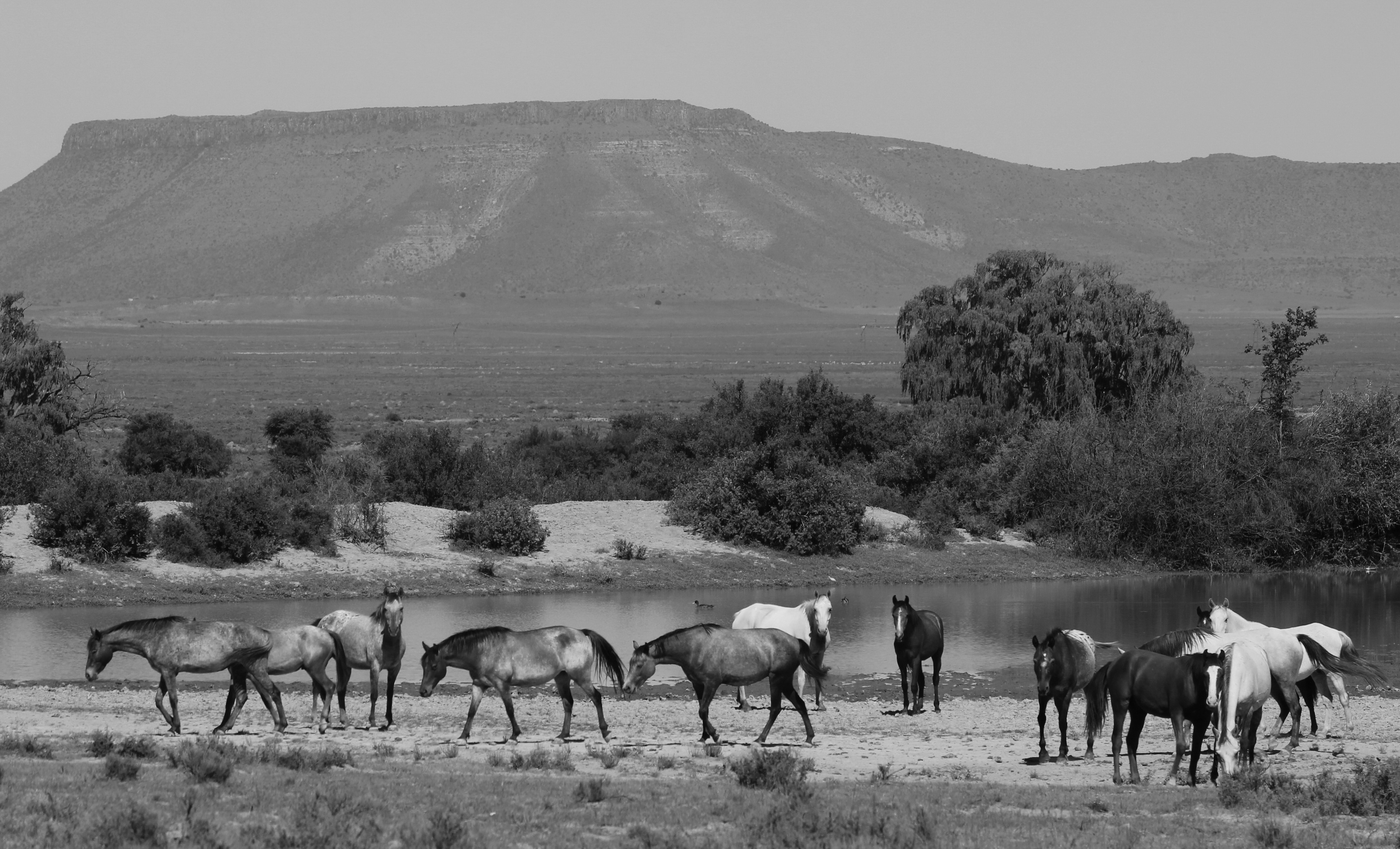
Gelykfontein Specials in their natural Karoo setting. Image: Chris Marais
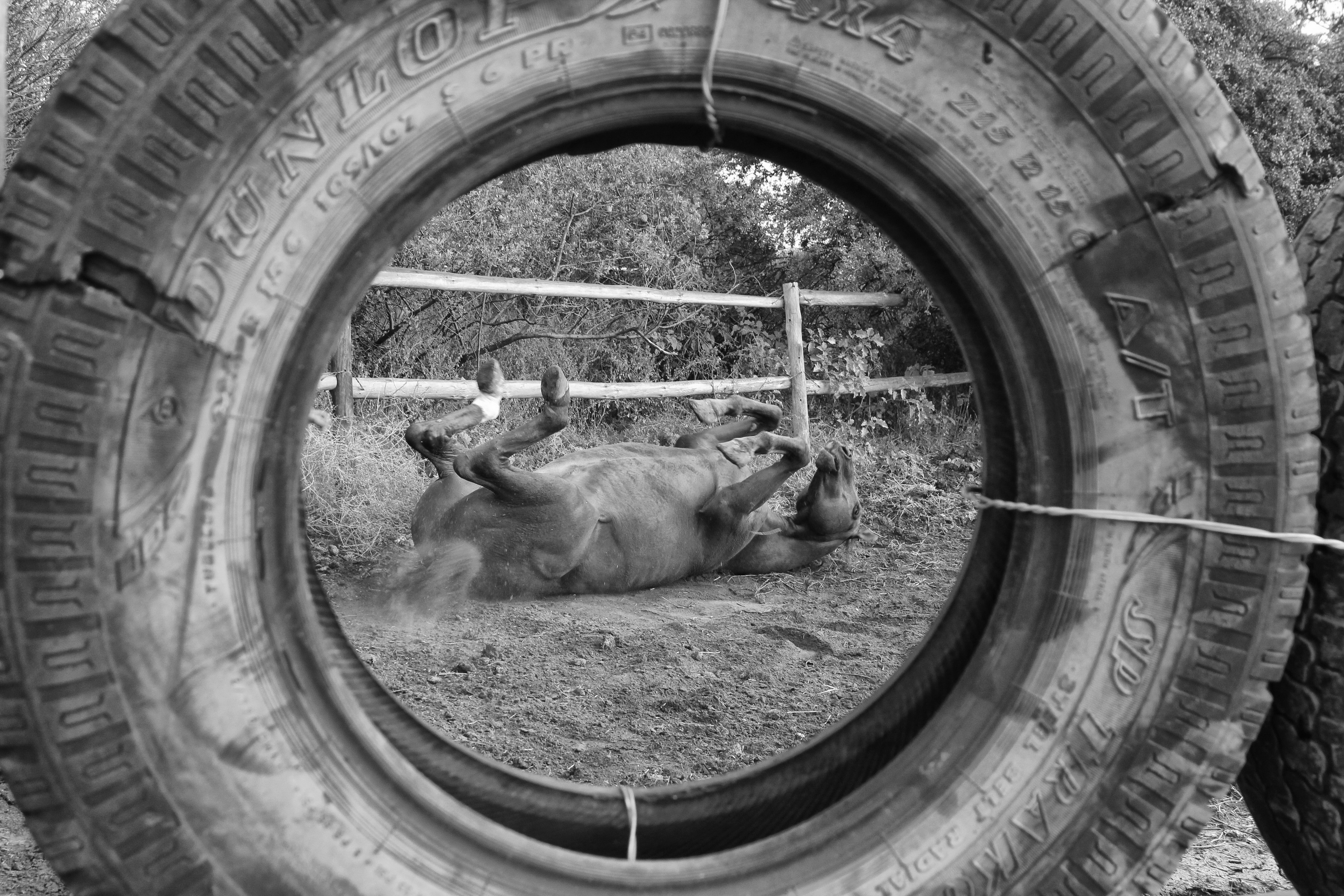
A decent dust bath in a Gelykfontein enclosure does wonders for this young steed. Image: Chris Marais
Strong bones
The Van der Walts have been farming this land since 1884. Schalk’s father JC “Boer” van der Walt began breeding thoroughbred horses here in 1935, following a tradition stretching back centuries in this region. His grandfather, also a farmer and a horse man, had a long association with Henry Nourse, who had three racehorse stud farms in the Karoo.
By the 1950s, around 70% of the country’s thoroughbred brood mares were based in a rough quadrangle between Venterstad, Middelburg, Colesberg and the southern Free State. The secret lay in the soil and plants, rich in calcium, phosphorus and other minerals that give horses strong bones. The dry healthy climate also ensured fewer diseases.
As recently as the 1970s, there were still 40 horse farms in this magical equine-friendly triangle of the Karoo. But when manufactured feeds were developed in the late 1980s to include all the trace minerals the animals needed, the Karoo lost its geographical edge. South Africa’s racehorse studs were increasingly moved close to bigger centres.
Van der Walt still believes that the natural grazing in the veld and the trace elements in the water are better for the horses than relying on artificial feeds.
When his father died, he inherited his herd of South Devons, European cattle that needed fairly intensive care in the harsh conditions of the Karoo. Later he replaced them with big, beefy Brahmans. Although more hardy, these particular specimens proved to be skittish and unmanageable, ploughing their way through fences onto neighbours’ properties.
In a fit of pique, Schalk van der Walt loaded up the Brahmans that had not yet escaped, sold them and went off to look for a beast more suited to the Karoo. In 1983, he made agricultural history when he became the first farmer in the Karoo to begin farming with Nguni cattle, and only the second in South Africa to do so. His neighbours thought he was quite mad. At the time, almost all livestock farmers dismissed this hardy breed as weedy and undesirable. They were referred to as “krummel beeste” (crumbed cattle) because of their eccentric dappled hides and comparatively smaller frames.
The Nguni Breeders Association was started in 1987 but it took decades before the breed really took off and more farmers realised their worth. Van der Walt enthusiastically enumerates their many desirable attributes: Nguni cattle fend off predators with their horns, he says, adopting the same laagering tactics with calves as do wild animals. They are disease-resistant and need no dipping against ticks, no antibiotics, no steroids, no kraaling, no dosing. They can digest browse from bushes and trees as well as grass because of the ammonia levels in their rumen. They are fertile, give birth easily, and are drought-survivors.
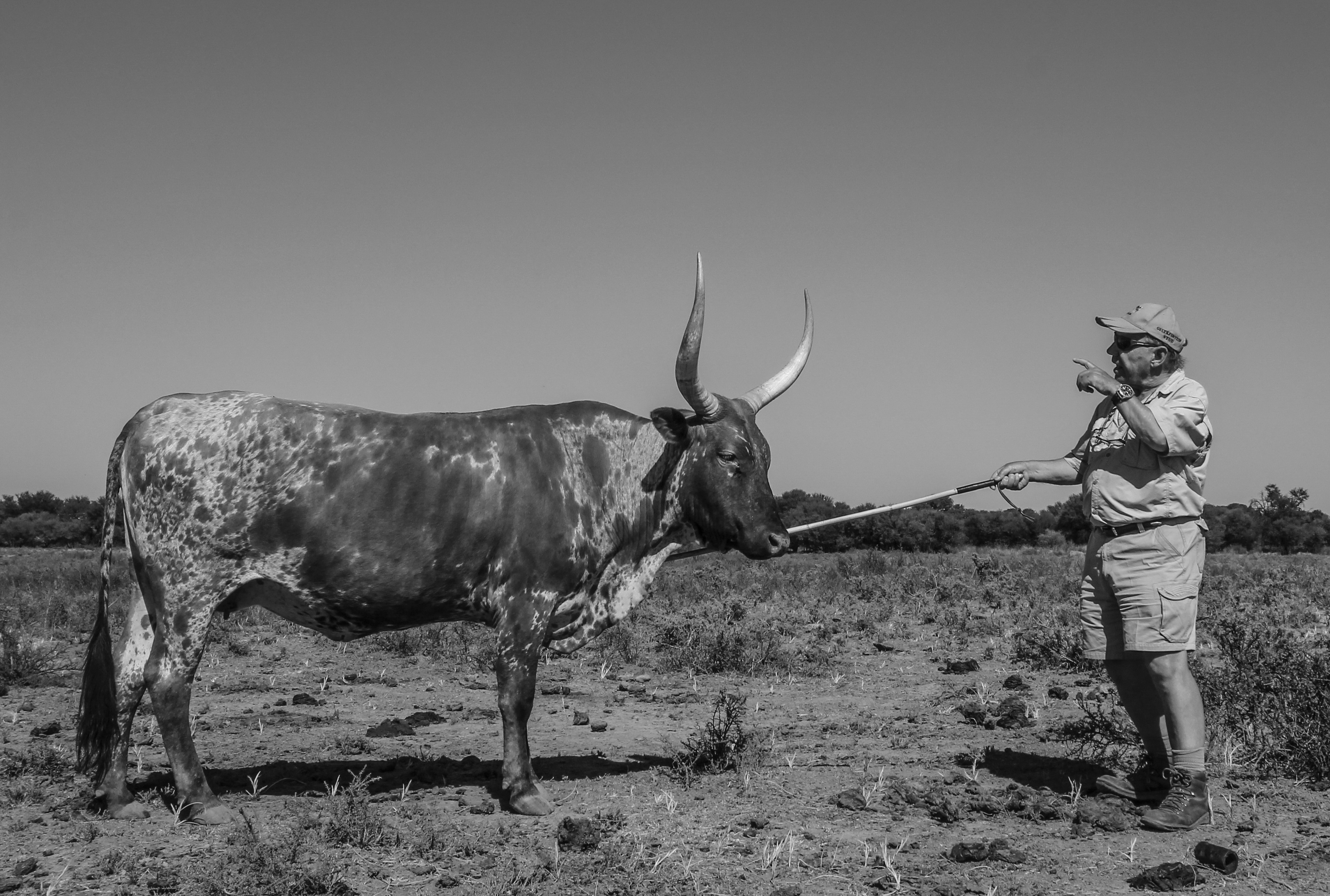
Schalk loves Ngunis for many reasons, but top among them is their calm temperament. Image: Chris Marais
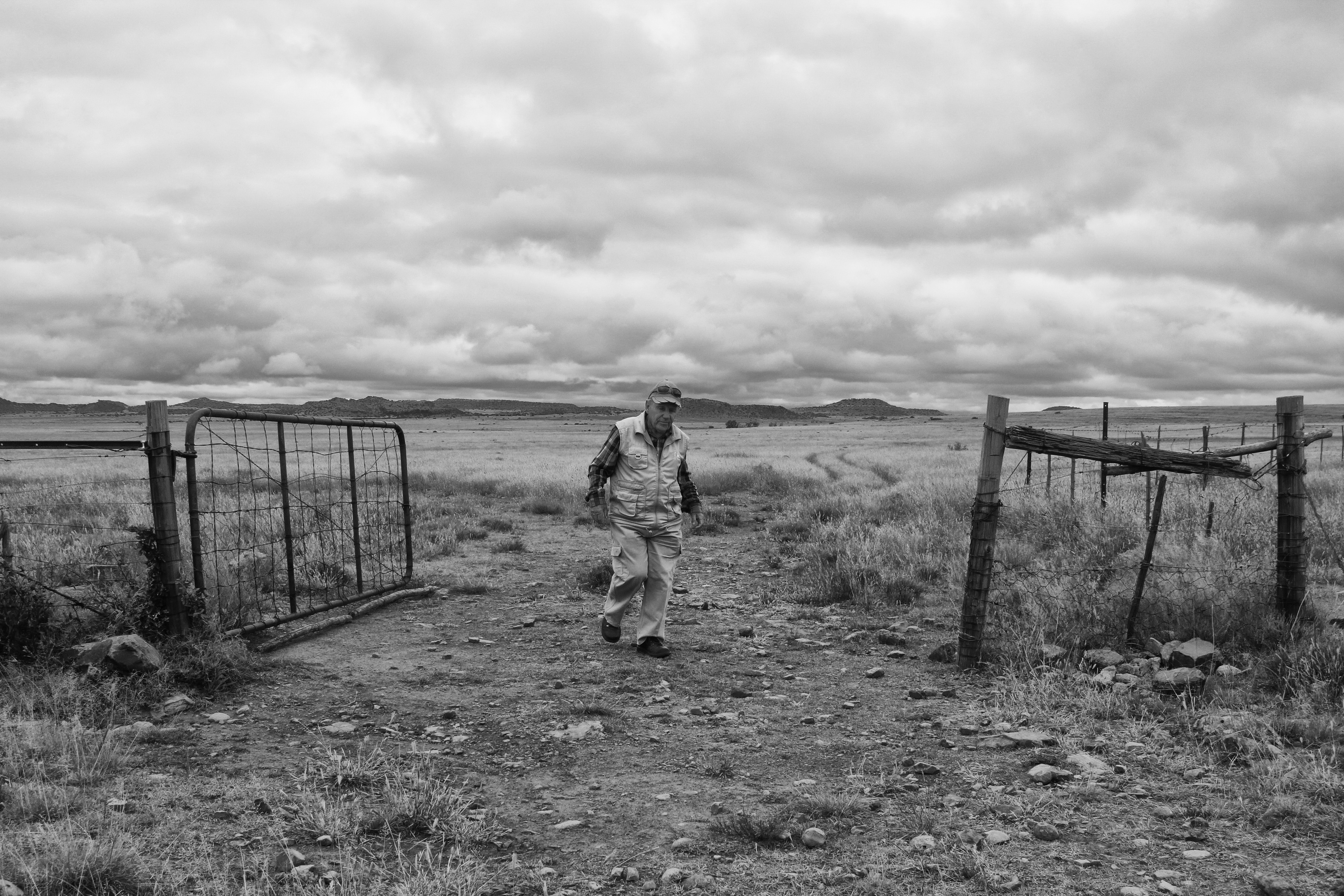
Schalk van der Walt of Gelykfontein Farm, Gariep district. Image: Chris Marais
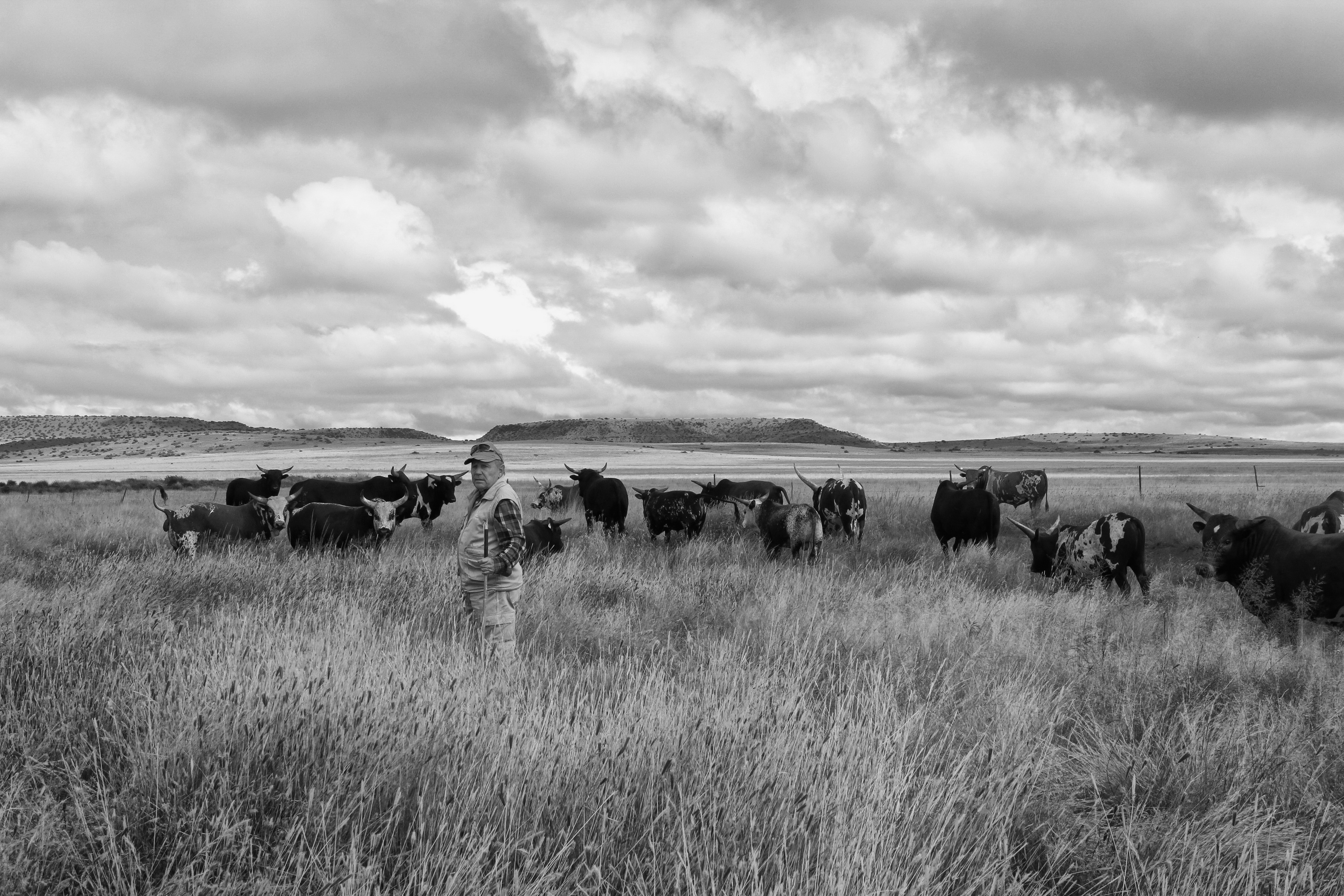
Schalk with his new breeding project – a herd of Ankole cattle. They are related to Nguni cattle, both being part of the Sanga, or Bos taurus africanus family. He has begun cross-breeding Ankole bulls with a selected group of Nguni cows in separate camps. Image: Chris Marais
Van der Walt is so besotted with the Ngunis that he will consider no other breed: “I’m not interested in those giant cattle, bred for feedlots. I don’t want to be running after them all the time.”
He has found a growing market for grass-fed, non-feedlot beef. More than that, he just loves their temperaments. Having evolved for at least 8,000 years alongside humans in Africa, Ngunis are tractable beasts – more placid and alert than most bovine types.
“Just look how calm this bull is,” he says, scratching its ear and dewlap with the stick he carries everywhere with him. “I could mention a few other cattle breeds that would have flattened and buried us by now.” He dotes on them, watching over his herds and talking about the heifers and bulls and their temperaments as if they were a bunch of eccentric relatives starring in a silent soap opera. He talks with love and familiarity of their ancestors and sires – Ingwavuma, Kip, Khalipe and Oryx Caprivi.
Dapples and dots
The speckled beasts and their toughness inspired Van der Walt to look anew at other locally adapted animals. In 1999, he invested in a group of perky Xhosa lob-eared goats, speckled with big apple-sized polka dots on their varicoloured pelts. When we come across them in the veld, a hand-raised nanny goat called Marilyn peeled out of the herd and made straight for Van der Walt, rubbing her face against his hands, peering adoringly into his eyes and meh-ing a goatish greeting.
Schalk van der Walt is even breeding a new kind of horse that is ideal for farmwork, stockmen and Karoo conditions. They are compact, responsive, good-natured mounts, with small, hard hooves that don’t need shoeing – a great boon on farms far from farriers. It will come as no surprise that many are spotted too, thanks to a splash of Appaloosa blood, along with Palomino, Nooitgedacht Boerperd and Welsh Pony.
He calls them Gelykfontein Specials.
Nearly a year later, we heard that rain had started falling on Gelykfontein and the Gariep catchment. It carried on and on, a remarkable 120mm of rain that revived the wetlands, turned the veld emerald green, washed away the dust. The Gariep dam swelled from 45% to near-capacity. It was a desperately welcome reprieve in a drought that would grind on for another three years.
“You have to come and see how beautiful it is,” said Schalk’s daughter Marené over the phone.
Karoo Cavalry
The dam was blue as shot silk, limpid as a pond. The veld was glorious. We watched as the frisky Merino sheep raced the springbok in the veld.
Ground squirrels popped up and flourished their tails at us. The ankerkaroo, vaalkaroo, katdoring, ganna and kriebos that seemed dead and grey only two months before were green and vigorous.
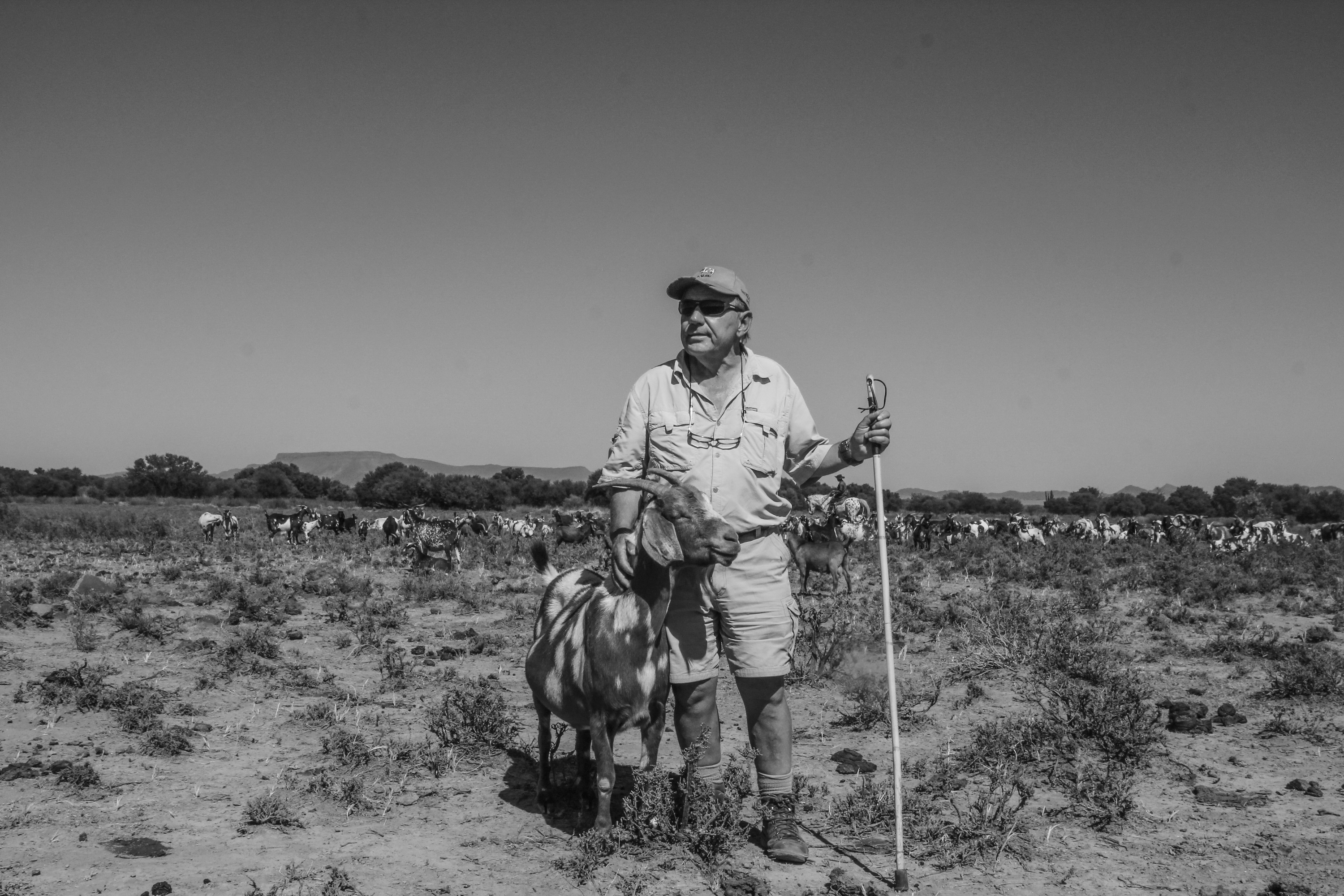
A hand-raised Xhosa lob-eared goat called Marilyn, who only has eyes for Schalk. Image: Chris Marais
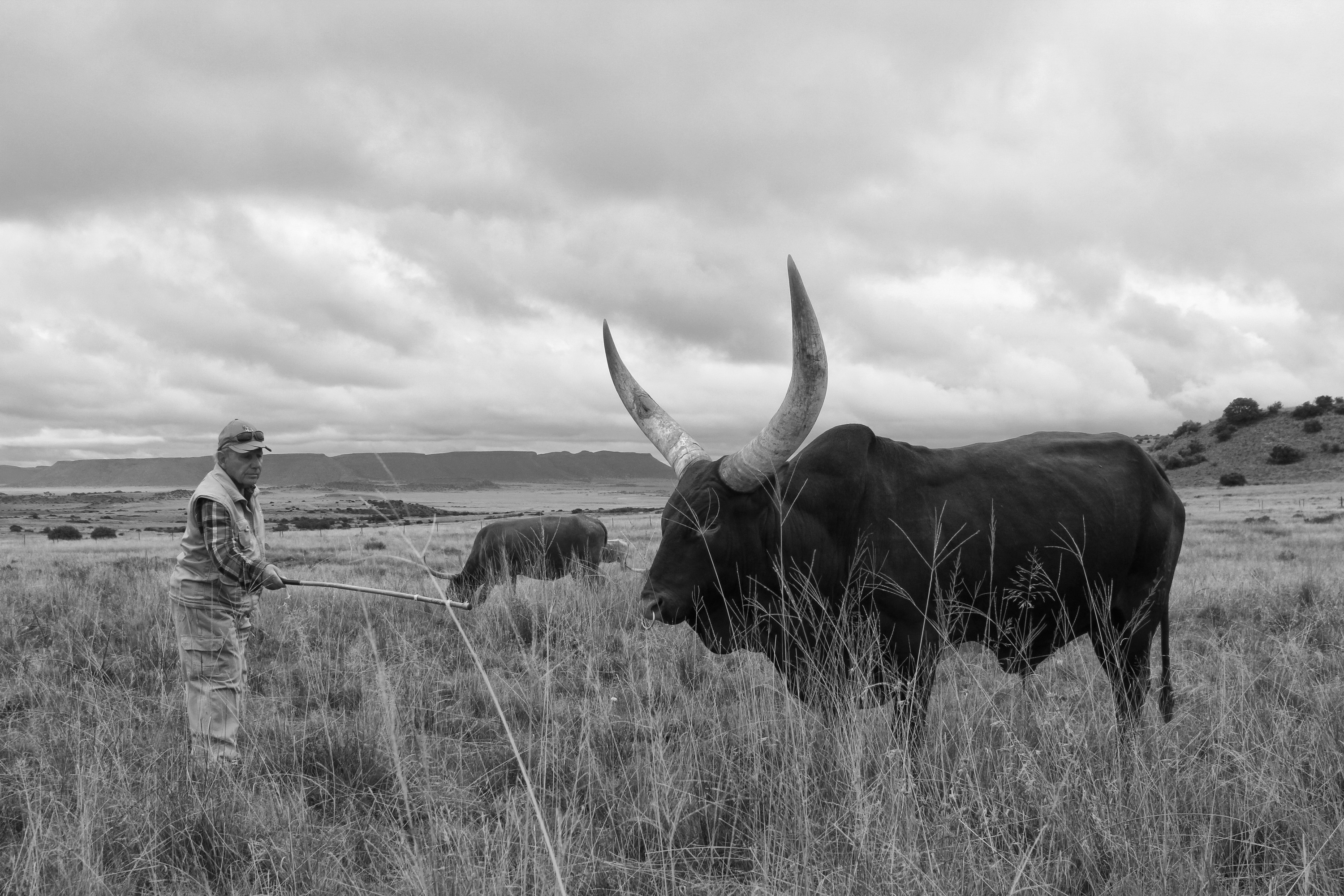
Ankole horns are spectacular, but also have a useful function in hot climates – helping to cool blood to the head. Image: Chris Marais
A Ludwig’s bustard stalked ahead of us, flying off heavily before we drew near. The korhaans call out their rattling krr-keraak cries. Blue cranes were pairing off to raise their young. The gemsbok watched us from a rise before wheeling away like a cavalry regiment.
Cresting a hill, we saw a herd of Van der Walt’s Gelykfontein Specials. They were scattered around the veld but raised their heads when they saw us, curious as cats. They came trotting our way, ears pricked up, clean-limbed horses with neat, compact hooves. Just like the cattle and goats, they were of various colours, some chestnut, some bay, some roan, some spotted as Appaloosas, a few Palominos like Copper, all with proudly curved necks, interested faces and kindly eyes.
These Karoo Mustangs gathered together in a spirited herd before stockman Frans “Tokkie” Januarie gently drove them towards the water. They galloped to the dam, splashing and showing off.
Tokkie was mounted on one of these same Gelykfontein Specials, white with brown freckles.
“What is his name?” we asked.
“Spotty,” answered the laconic Tokkie. DM
This is an extract from Karoo Roads III – The Journeys Continue, a book with black-and-white images by Chris Marais and Julienne du Toit. For an insider’s view on life in the Dry Country, get the three-book special of Karoo Roads I, Karoo Roads II and Karoo Roads III for only R800, including courier costs in South Africa. For more details, contact Julie at [email protected]









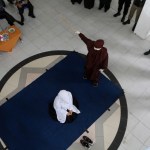










 Become an Insider
Become an Insider
What a delightful article!! Thoroughly enjoyed it! It little positiveness in todays negative news times!